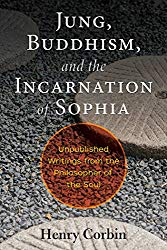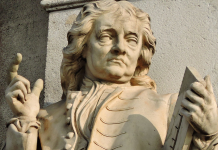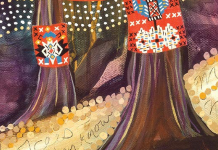
Jung, Buddhism, and the Incarnation of Sophia: Unpublished Writings from the Philosopher of the Soul, by Henry Corbin
Inner Traditions, 9781620557396, 208 pp., 2019
I have always been fascinated by Jungian psychology and the mysteries of Buddhism. So, any treatise that offers the fusion of some of the world’s most insightful systems of self-exploration to create a palette of complexity that is surprisingly simple in practice when given the right interpretations is something I am intrigued by. Jung, Buddhism, and the Incarnation of Sophia: Unpublished Writings from the Philosopher of the Soul did not fail to satisfy, but before settling into the material, it is important to know a little bit about the author: Henry Corbin, the Philosopher of the Soul.
His excessive modesty as a researcher and thinker perhaps prevented him during his lifetime from occupying his legitimate position at the horizon of French thoughts and doubtless beyond…. An enormous misunderstanding developed around him: as an orientalist for the philosophers and a philosopher for the orientalists, no one quite knew where to place him, nor was it understood that it was moreover this very indefinable character that doubtlessly legitimized the unfolding of his work.1
Henry Corbin died in 1978 and this book is a collection of his writings, previously unpublished in English. The editor, Michael Cazenave has also passed (2018), but his words open and close this book as introduction to Corbin’s work and informing us that this book is a collaborative effort. Stella Corbin, Henry’s wife entrusted her husband’s writings to Cazanave and he followed her instructions regarding placement and order to the letter. These facts may seem trivial, but I believe hey speak to the integrity and thought that has gone into this book.
Jung, Buddhism and the Incarnation of Sophia is divided simply into two parts, the first containing five essays and the second, only two. The appendices that follow are more than tables and references. The reader is treated to correspondences from Corbin relating to these essays and the proposal of a book that was to have been published on Carl Jung’s 80th birthday in 1955. That publication never came to fruition, but from that seed thought, this book was born.
The reader knows from the beginning that this is going to be a very substantial work by the care and attention that has been given to its compilation by all involved in its completion. I felt that although it could be taken as being too lengthy an introduction to the style and reasoning behind the organization of the material contained, it set the tone for the reader to truly experience these writings as the author would have intended.
This book is not an easy read, but it does go to great lengths to ensure that the reader has a grasp of the basic principles of Buddhism and its connections to the psychological philosophies of Jung, which were laden with the mysteries and applicable metaphors of spiritual beliefs. The thorough and thought-filled commentary by Corbin on Jung’s book Answer to Job seems as though it is a separate piece, but having completed part one, the reader will realize the deeper connection between the two.
Part one, entitled “Carl Gustav Jung and Buddhism,” introduces the reader to the influences that are at work in the practice of Zen Buddhism and the goals of impermanence and enlightenment. The steps taken towards the individuation of one who follows these precepts, by virtue of its ultimate goal of at oneness, we are told has at its centre an abyss or gap of sorts that is only understandable by the knowing of consciousness and its psychological overlays. This is where Jungian practice provides such a bridge. The chapters within this section take the reader through the commonly known components of Buddhism such as: meditation, the Tibetan Book of the Dead and Taoist alchemy.
The second chapter, “Pure Land (The Psychology of Oriental Meditation),” was one I easily related to, as I spent many years engaging in meditation and contemplative practice. This chapter provides a beautiful step-by-step walkthrough of a meditation of being reborn in Amitabha’s (a form of Buddha) Paradise. Corbin relates that upon completion of the many intricacies of this meditation writing “you will be able to perceive the Buddha, because each body of the perfect Buddha is a Body of Essence (dharmakaya) so that he can penetrate into the consciousness of all beings.”2
What follows is the metaphoric breakdown of this practice through the lens of Carl Jung and its application towards integration of the self, identification of the “I” and our perceptions of consciousness in enlightenment aka “knowledge of the self.”
The subsequent chapters provide the reader with a broader perspective of the sacred text, The Tibetan Book of the Dead, with Jung’s application as an exercise in seeing from the side of the living what is beheld in the process of death and its byproduct of incarnation.
Part one concludes with a discourse entitled, “The Self and Sophia.” I found this to be particularly interesting and a beautiful bridge into deeper exploration in part two and the first essay of that section, “Eternal Sophia.” To quote Corbin regarding the concept of Sophia as it relates to the Jungian archetypes, “Her image corresponds so well to the archetype of the anima-animus that as a sidereal phantasmagoria, the Virgo Sophia, man’s angel and guide, appears to the lover in the form of the beloved and appears to beloved in the form of the lover.”3
For me, the concept of Sophia has always been tied to the thought of Her as a Being of gnosis that embodies the feminine principles of creation’s outpourings. Reading what Corbin has to say and the overlay of Jungian archetypal energy of male and female united took me beyond the limitations of my original definition and allowed for an awakening to the greater potential. In ending this part of the book with this essay heralded the shift of Corbin away from the weavings of Buddhism and Jungian thought. Now, we are taken into an exploration of consciousness, self-reliance and the nature of trial and tribulation in order to find the place of our own Sophianic wisdom.
Citing Jung’s controversial work, Answer to Job, aptly used as the title for Part Two, the comparison is made to the connection between the gy of individualization and the alchemical nature of that process. The focus is on Jung’s view of Job’s story as a tale that relates this through the “suffering” experienced by Job as part of the journey and work of the individual in claiming the totality of anima and animus expressed as the eternal wisdom of Sophia. But, before we even encounter this thought process, we are given a “behind the scenes” narrative of how this work of Jung’s came to be and the meetings of the great thinkers and scientists who collectively poured their souls into deciphering the alchemical mysteries of Sophia.
Corbin describes what Jung defines as the “Alchemical Mystery.” He states,
The mystery of Wisdom or the eternal Sophia, that the real accomplishment of its rites accompanies the birth of the Homo Totus in the innermost recesses of the person of the adept, and that this whole comes about through the conjunction of the earthly “I” with that of one’s celestial soul, one’s Anima Celestius, the Virgo Sophia.4
Corbin makes note of Jung’s perspective in the retelling of a story laden in theological import that the psychology of this recounting is the important key in realizing that dogma and religious thought are not the true harbingers of wisdom — the transformation of the individual occurs in the awakening of the personality devoid of the constraints and limitations of that path of thought. Although these sections required some re-reading to fully comprehend the points being made, it was well worth the effort. And, for those whose hunger for more has yet to be satisfied, there is quite an extensive and impressive bibliography that provides information rich resources for any who wish to explore Buddhism and Jungian practice in a comprehensive and academic way.
Jung, Buddhism, and the Incarnation of Sophia delivered on all accounts in offering me valuable insights into the complexities of the psycho-spiritual nature of Gnostic and Buddhist practices, as well as filling my coffers with a simplicity that inspires a more contemplative approach in the deepening of my own spiritual and philosophical beliefs.
Photo Credit: Simon Cozens









